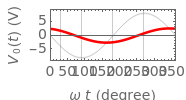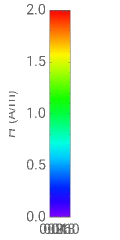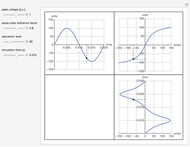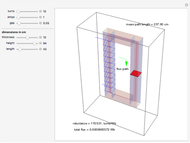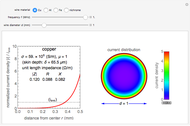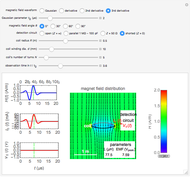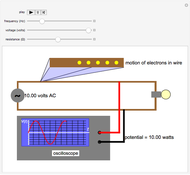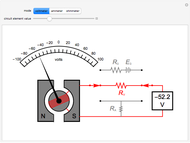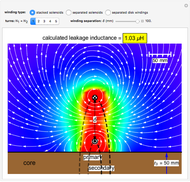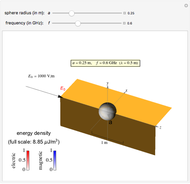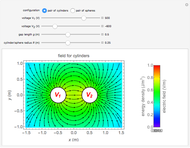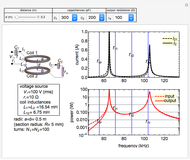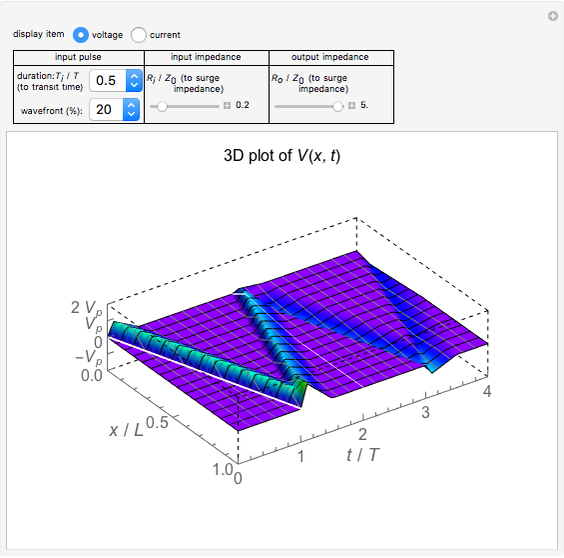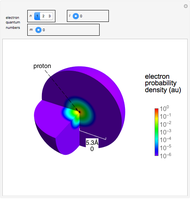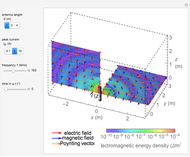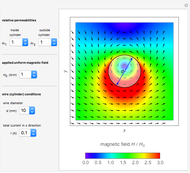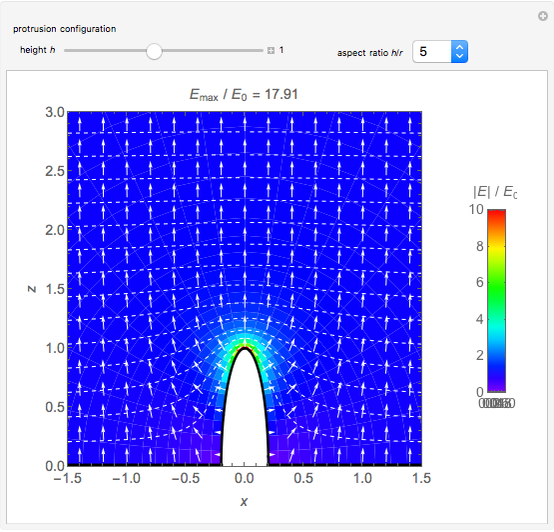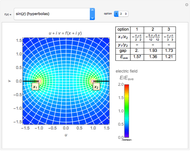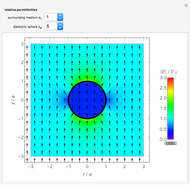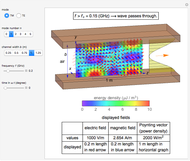Induction of a Sinusoidal Magnetic Field within a Coil

Requires a Wolfram Notebook System
Interact on desktop, mobile and cloud with the free Wolfram Player or other Wolfram Language products.
When a coil is placed in a sinusoidally varying magnetic field, a current and voltage are induced in accordance with Faraday's law. This Demonstration shows plots of the magnetic field. Assuming a uniform near field, the magnetic field is assumed to be uniform everywhere in the space. The coil has a substantial inductance with current or voltage, which can be detected by an oscilloscope. The current and voltage waveforms can be calculated for four types of detection circuits: open circuit, usual oscilloscope impedance (1 M //100 pF), cable's matching impedance (50
//100 pF), cable's matching impedance (50 ), and shorted condition. The amplitude of the exciting magnetic field is fixed at 1 A/m, but the frequency and the spacial direction are variable. You can vary the coil configuration (radius, winding cross-sectional diameter, and number of turns). The sideways view of the magnetic field pattern modified by the coil current at the selected time is displayed by using color and arrows.
), and shorted condition. The amplitude of the exciting magnetic field is fixed at 1 A/m, but the frequency and the spacial direction are variable. You can vary the coil configuration (radius, winding cross-sectional diameter, and number of turns). The sideways view of the magnetic field pattern modified by the coil current at the selected time is displayed by using color and arrows.
Contributed by: Y. Shibuya (October 2012)
Open content licensed under CC BY-NC-SA
Snapshots
Details
Snapshot 1: a five-turn coil is placed upright to the field of 0.3 MHz and is shorted
Snapshot 2: a five-turn coil is connected to 1M –100pF detection circuit for the field of 0.3 MHz
–100pF detection circuit for the field of 0.3 MHz
Snapshot 3: an increased-turn (30) coil resonates with the capacitor of 1M –100pF detection circuit for the 0.3MHz field
–100pF detection circuit for the 0.3MHz field
The sinusoidal field  induces the electromotive force (EMF)
induces the electromotive force (EMF)  in a circular coil of radius
in a circular coil of radius  with
with  turns,
turns,  being the angle between field and coil axis. Assuming the circular section of coil has diameter
being the angle between field and coil axis. Assuming the circular section of coil has diameter  , the coil's inductance is approximated by
, the coil's inductance is approximated by  . Then the current and voltage in the detection circuit are calculated by
. Then the current and voltage in the detection circuit are calculated by  ,
,  , where
, where  is the impedance of the detection circuit. For the open circuit,
is the impedance of the detection circuit. For the open circuit,  is set at 1 M
is set at 1 M and 100 pF; for the shorted circuit, it is 50
and 100 pF; for the shorted circuit, it is 50 .
.
The coil current produces a magnetic field superimposed on the original field. The additional magnetic field for the ring current involves Bessel functions. The magnetic field pattern is readily obtained, specifying the time and phase values.
Among the four detection circuits, the detected current increases most generally in this order: open circuit, 1 M //100 pF, 50
//100 pF, 50 , and shorted conditions. The detected voltage tends to vary in the opposite direction. However, in the detection circuit of 1 M
, and shorted conditions. The detected voltage tends to vary in the opposite direction. However, in the detection circuit of 1 M //100 pF, an extraordinary large current and voltage can occur during resonance between the coil inductance and the capacitor in the detection circuit, as shown in snapshot 3.
//100 pF, an extraordinary large current and voltage can occur during resonance between the coil inductance and the capacitor in the detection circuit, as shown in snapshot 3.
Reference
[1] J. D. Jackson, Classical Electrodynamics, 3rd ed., New York: John Wiley & Sons, 1998.
Permanent Citation


